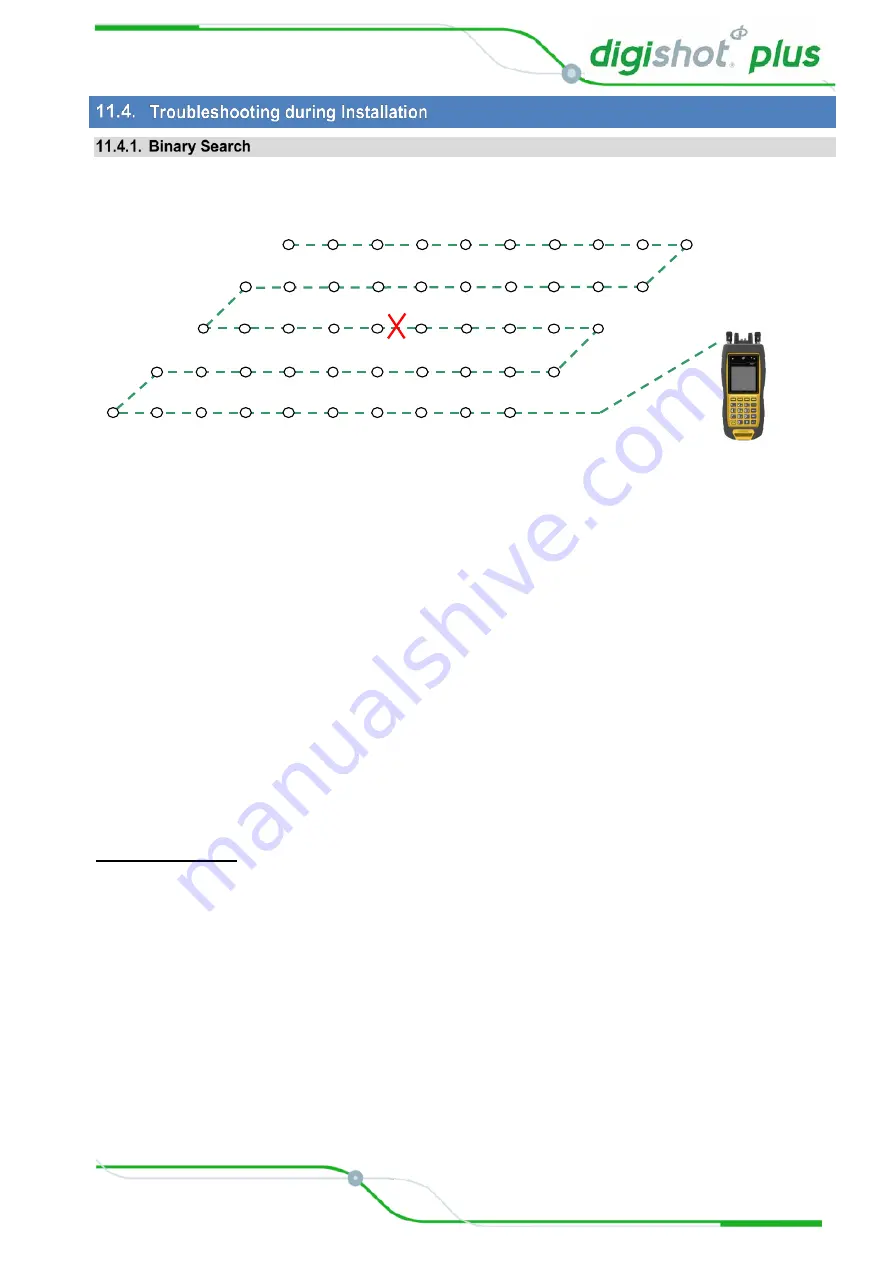
UTM-00330
|
Rev 5
Page
87
of
91
DetNet South Africa Copyright © 2019
Untagged Detonators
Conduct a binary search by breaking down the blast into manageable sections, to locate untagged detonators.
The Binary Search is conducted as follows:
1. Assume Row 1 above has an untagged detonator connected but its location is unknown and it needs
to be found.
2. Divide the blast in half and cut the surface harness at mid-point.
3. Connect the DigiShot
®
Plus Tagger and check the back half for untagged detonators. Should the
DigiShot
®
Plus Tagger display NO UNTAGGGED DETONATORS, proceed with following step.
4. Connect the DigiShot
®
Plus Tagger and check front half for untagged detonators. Should the Tagger
now display UNTAGGGED DETONATORS it can be deduced that the problem is located in the front
half of the blast. Repeat the partitioning process there.
5. Divide the front half and test backward and forward from the centre to narrow down the search area.
6. By repeating this process, the fault is narrowed down to a small and manageable area. At this point
DigiShot
®
Plus detonators may be disconnected from the surface harness and tested one at a time
using the
TEST SINGLE DETONATOR
facility to locate the untagged detonator.
7. Once the untagged detonator is found, tag the DigiShot
®
Plus detonator according to blast plan and
ensure all broken wires are correctly reconnected and insulated with tape to prevent leakage
problems.
8. Test Harness Wire to ensure all DigiShot
®
Plus detonators have been identified and detected.
Alternative method:
If an existing blast plan is available, use the Autosearch function and check the blast summary against the
blast plan to determine which row has a problem. The detonator count on that row will be incorrect.
Examine the detonator list for that row to determine which detonator in that row is missing.
There is a strong possibility that this is the untagged detonator thus checking for the untagged detonator as
detailed in this alternative method may be easier than performing the binary search.
Row 1
Row 2
Row 3
Row 4
Row 5



















